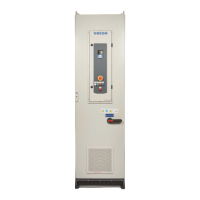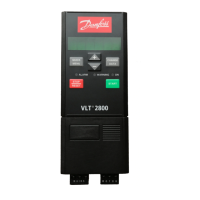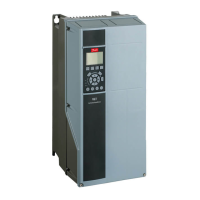•
•
-
-
-
Active and reached functions can have their monitoring limits violated.
When the STO function is active in the option board, for example because of a violation or a fault, all active safety functions stop the
monitoring of their limits. The functions stay active until they are acknowledged. The SSM function is an exception. It continues to
monitor even during standstill of the motor and violations of other safety functions.
6.1.3 Activation of a Safety Function
Most safety functions can be activated with an external request from a safe digital input or a safe fieldbus. Both methods can be
used at the same time. When the two methods are used, a request from one source is sufficient to activate the safety function.
When a safety function becomes active, it gives an Active signal. Many functions can be active at the same time, but this does not
apply to all functions. Any combination of safe monitoring functions can be active at the same time, but for the safe stopping func-
tions there are limitations because of their set priorities.
These safety functions can be activated with an external request from a digital input or a safe fieldbus: STO(+SBC), SS1, SS2, SQS,
SSR, SLS, SSM, and SMS.
The safety functions that cannot be activated with an external request are SBC and SOS. They are always activated by other safety
functions. The safety function STO activates SBC. The safety functions SS2 and SQS-SS2 activate SOS.
Some safety functions can also become active without an external request. The SQS function can become active as a violation re-
sponse, the SSM function when always active, and the STO function as a violation response of safe stopping functions.
In some special conditions, a function cannot become active even if there is a request. These conditions include a request for a
lower priority function, an active violation or fault in the Advanced safety option board, and the active STO safety function. When
the Advanced safety option board is in the STO state, for example, because of a STO request, it is not necessary to activate safety
functions.
N O T I C E
Most safety functions do not become active or start operating if the drive is in the STO state. If there is a request, they become
active when the drive leaves the STO state.
In this manual, the external request signal has the format "[Safety Function Name] Request", for example "SMS Request".
6.1.4 Violation of a Safety Function
It is possible that violations occur in the monitoring. Causes for violations are, for example, the speed exceeding the monitored
speed limit, the speed not following the monitored ramp, or an operation exceeding the set time limit.
There are two different violation responses:
the STO (+SBC) function
the SQS function
N O T I C E
NO AUTOMATIC RAMP WITH SQS FUNCTION
When the SQS safety function is used, the Advanced safety option board does not execute any ramps on its own. Make sure that
the system reacts to violation situations in an acceptable way.
Execute a ramp stop by a drive application with safety support. See 13.3 SS1 Used with STO(+SBC).
Execute a ramp stop by a drive application without safety support by triggering a stop command externally.
Execute a ramp stop by a process control system. See 13.4 SS1 Without a Direct Support of the Drive Application and 13.6
SLS without a Direct Support of the Drive Application.
For safe stopping functions, the response to a violation is the STO (+SBC) function. For safe monitoring functions excluding SSM, the
response to a violation is the SQS function.
With the SSM function, there is no response to a violation. Instead, external systems are notified of the violation by a digital output
or a fieldbus.
To make a safety function recover from a violation, use a reset signal. See 6.1.6 Reset of a Safety Function.
AQ319736045637en-000101 / DPD0179858 | Danfoss A/S © 2021.06
Safety Functions
VACON® NXP Advanced Safety Options
Operating Guide

